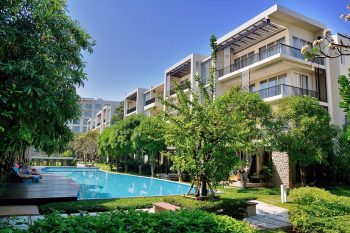Eco-Friendly Strategies for Property Managers
 Sustainability and green building have been two of the enduring trends of recent decades. While green building emerged in the 1990s, it started taking center stage a decade later and ever since it’s been keeping the spotlight. Similarly, sustainability, once a niche feature, is now a hot topic for everyone, including renters and property managers.
Sustainability and green building have been two of the enduring trends of recent decades. While green building emerged in the 1990s, it started taking center stage a decade later and ever since it’s been keeping the spotlight. Similarly, sustainability, once a niche feature, is now a hot topic for everyone, including renters and property managers.
Younger generations, which make the largest pool of residents, care about their carbon footprint and they are willing to pay more for apartments managed by teams focused on environmental responsibility—and multifamily owners and operators must focus on making their communities appealing to this group.
Sure, sustainable design and green building are paramount in the collective effort to provide a greener lifestyle for apartment dwellers—but what other green living features should owners and operators focus on? We’ve put together the top eco-friendly amenities that will make your community more appealing to potential renters and retain the existing ones.
START LIGHT
- Caulk and insulate exterior windows and doors. This will not only help with heating and cooling costs but will also substantially reduce sound transfer between spaces.
- Refresh interiors with eco-friendly paints with low or no VOC emissions. Indoor air quality has become a hot topic since the onset of the pandemic and will continue to be a top amenity even after it ends.
- Ditch the incandescent bulbs and switch to energy-efficient lightings, such as LED and CFL lamps.
- Install energy-efficiency appliances and HVAC. Investing in the right refrigerators, dishwashers, ceiling fans and the rest will reduce energy consumption and lower the utility bills. More importantly, these will create the energy-efficient home eco-conscious renters seek.
- Install smart meters. These tech bits help the tenants pay for exactly what they consume, every month. Nobody likes estimated billing these days.
- Beef up recycling programs. In addition to the common separation of plastic, glass, paper and aluminum items, you can also easily prepare an area where residents can dispose of light bulbs, batteries and electronics.
BUILD IT UP
- Invest in smart-home technology. Residents love smart thermostats, which are steadily becoming the standard home product for new developments. These high-tech gadgets can be programmed (and some can learn by themselves) to adjust heating and cooling processes in accordance with the time of day, times when no one is at home or while the residents are on vacation.
- Water preservation. In addition to installing low-flow faucets, showerheads and toilets, consider adding a stormwater retention tank and use the water it collects for irrigation or to flush the toilets.
- Landscaping. Plan your planting to take advantage of its natural characteristics. For example, plant water-loving willows in low areas and conifers on higher ground. Or try xeriscaping, a landscaping technique that uses native plants and rock to minimize water use.
- Mind your roof. The rooftops of your buildings will greatly impact the overall energy efficiency of the community. In warmer climates, for example, opt for roofing products that reflect the sun’s energy away from the roof—such as slate, terracotta and white tiles—cool faster at night and hold heat for less time to reduce energy costs and usage related to heat.
- Upgrade to a green roof. Even though living roofs are used more frequently in commercial developments, they are becoming increasingly popular in multifamily communities. Residents will enjoy looking at the plants living atop their apartments, which will also insulate the property and filter rainwater, preventing it from running directly into the storm sewer system.
- Install a photovoltaic solar array and a complimentary battery storage unit.
If your community has all or most of these sustainable features, you can consider enrolling to have it certified for its green achievements. The U.S. Green Building Council’s LEED award is one of the most popular certifications out there and owning such a designation will make a strong sustainability statement. Besides, it will help you retain and attract residents while increasing the property’s value in the long term.
Source: multihousingnews.com















 Accessibility
Accessibility